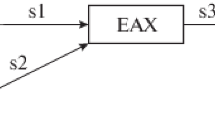Abstract
Parallel computer systems are typically employed in order to obtain higher performance or cost-performance levels than can be achieved by a conventional system. It is therefore important that parallel software achieves sufficiently high performance to justify investment in a parallel platform.Performance prediction is a potentially important tool, allowing the parallel programmer or the parallelising compiler to determine the relative merits of different arallelisation schemes, and select the implementation which offers the highest performance. In order to accurately predict the execution time of parallel programs, we must first be able to accurately predict the execution times of the sequential components of a parallel program. This paper applies a micro-analysis technique to deriving estimates of the sequential execution time of code fragments written in a subset of Fortran 77. The approach considers the execution of each code fragment to involve the execution of a certain number of various basic operations, and predicts the execution time of the fragment using expected execution times for the basic operations, which can be derived automatically. Models are developed for five microprocessor platforms (Inmos T800, Intel i860, Sun 4/20, Sun 4/75, MIPS R3000) and are used to predict the execution time of six simple code fragments, drawn from the Livermore Loops. Comparison of predicted and measured execution times for these fragments gives an average percentage error for each platform of between 19.7% and 66.1%. The paper concludes with a discussion of the model’s inaccuracies and proposals for further work.
Access this chapter
Tax calculation will be finalised at checkout
Purchases are for personal use only
Preview
Unable to display preview. Download preview PDF.
Similar content being viewed by others
References
E. H. McMahon. L.L.N.L FORTRAN kernels: MFLOPS. Lawrence Livermore National Laboratory, 1986.
J. L. Hennessy and D. A. Patterson. Computer Architecture: A Quantitative Approach. Morgan Kaufmann, 1990.
J. Cohen. Computer-Assisted Microanalysis of Programs. Communications of the ACM, 25 (10): 724–733, October 1982.
J. Cohen and A. Weitzman. Software Tools for Micro-analysis of Programs. Software — Practice and Experience, 22 (9): 777–808, September 1992.
Author information
Authors and Affiliations
Editor information
Rights and permissions
Copyright information
© 1994 Friedr. Vieweg & Sohn Verlagsgesellschaft mbH, Braunschweig/Wiesbaden
About this chapter
Cite this chapter
MacDonald, N.B. (1994). Predicting Execution Times of Sequential Scientific Kernels. In: Keßler, C.W. (eds) Automatic Parallelization. Vieweg+Teubner Verlag. https://doi.org/10.1007/978-3-322-87865-6_2
Download citation
DOI: https://doi.org/10.1007/978-3-322-87865-6_2
Publisher Name: Vieweg+Teubner Verlag
Print ISBN: 978-3-528-05401-4
Online ISBN: 978-3-322-87865-6
eBook Packages: Springer Book Archive




